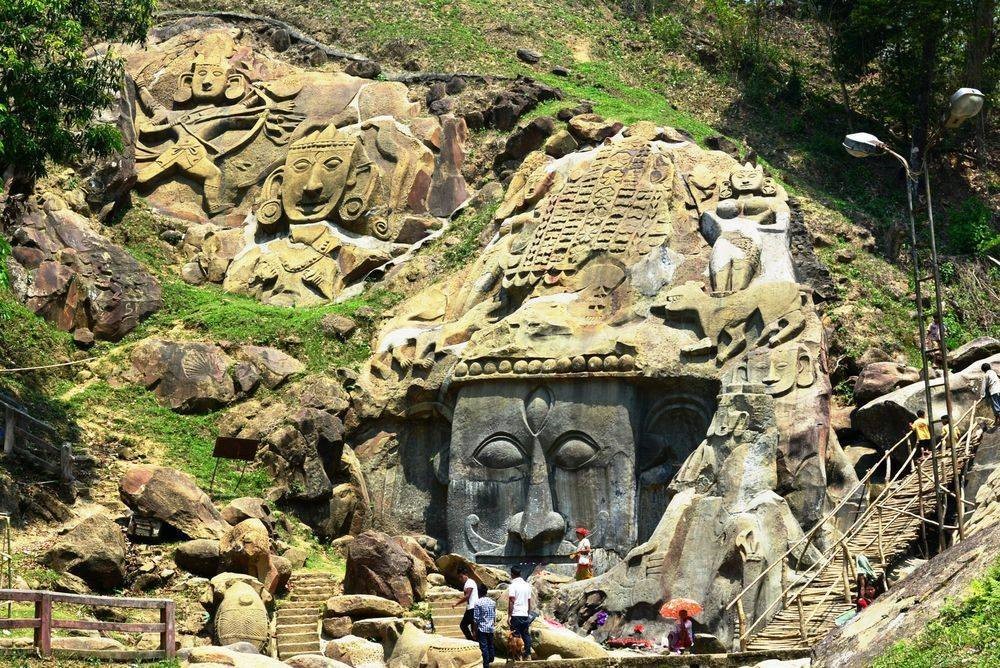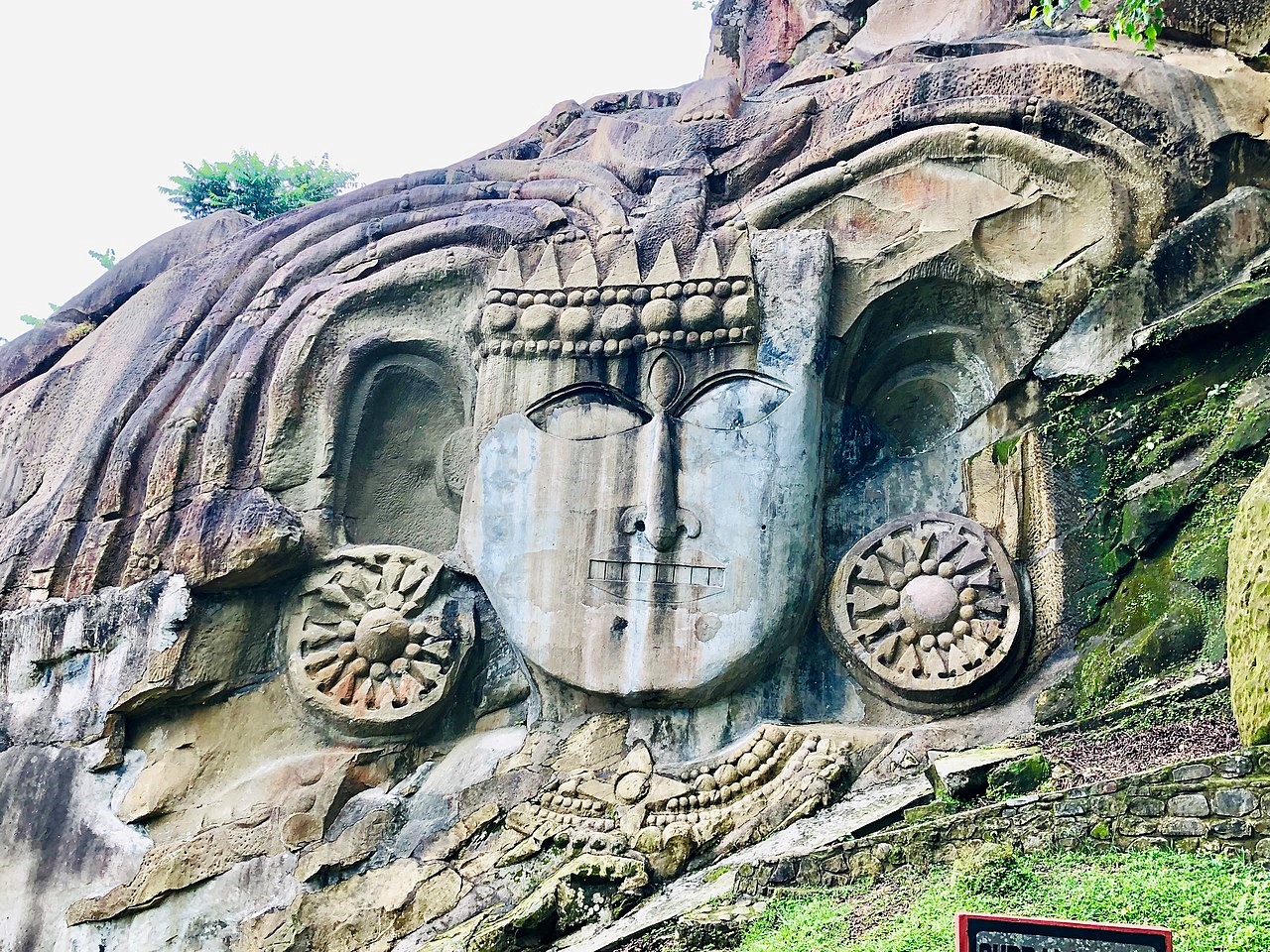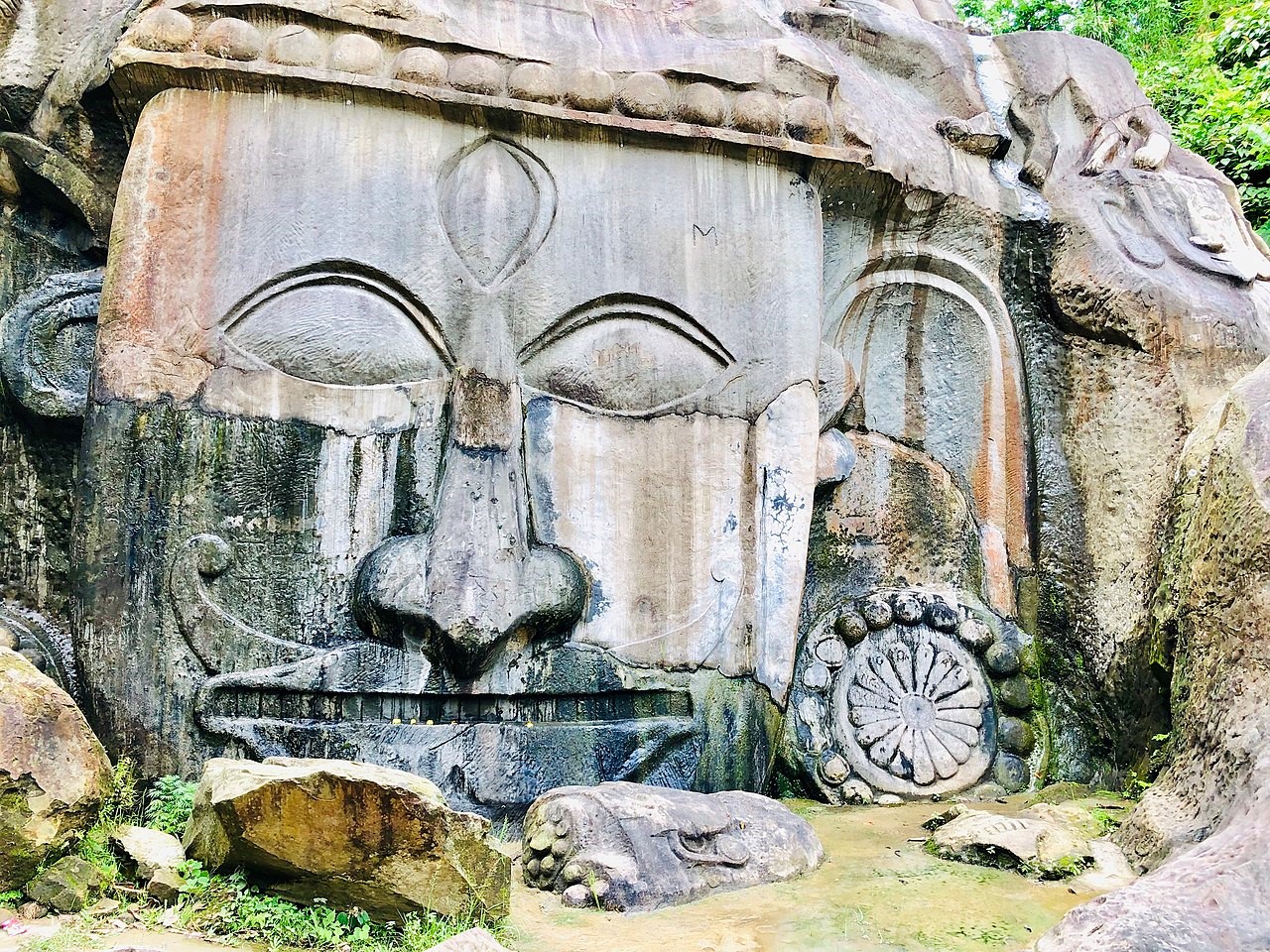UNAKOTI

(Source)
Introduction
Rock carvings, murals, and natural waterfalls are what best defines this place and what makes this place historical is the Shaiba pilgrimage dating back to 7th and 9th centuries. The legendary fact is that this is the place where Lord Shiva rested on his way to Kashi. When all the other gods and goddesses could not wake up in time Lord Buddha set out on his path by himself cursing the others to be turned to stones. This is why we see one less than one crore stone images and carvings in Unakoti. The Unakotiswara Kal Bhairava is Shiva’s rock-cut carving that is about 30 feet high, surrounded by rock effigies of two females. The same was featured in the Tripura Tableau at the 2016 Republic Day ParadeSource
The kokborok name of Unakoti is Subrai Khung as claimed by Jamatia Hoda; Unakoti hill literally means one less a koti in Bengali, hosts an ancient Shaivite place of worship with huge rock reliefs celebrating Shiva. It is the prime tourist spot of Unakoti District, Tripura in the Kailashahar Subdivision in the North-eastern Indian state of Tripura.[1] It is Shiva pilgrimage and dates back to 7th – 9th centuries if not earlier. In those time the Pala dynasty ruled over the Bengal. Tripura region was a part of Greater Bengal under Samatat. Historians said (Nihar Ranjan Ray, Rakhaldas Bondopadhaya) the kingdom of Tripura was also a center of East Bengal and Samatat. The Tripura kingdom started to rule over the region in the 14-th century. The images found at Unakoti are of two types: namely rock-carved figures and stone images. Among the rock-cut carvings, the central Shiva head and gigantic Ganesha figures deserve special mention. The central Shiva head known as Unakotiswara Kal Bhairava is about 30 feet high including an embroidered head-dress which itself is 10 feet high. On each side of the head-dress of the central Shiva, there are two full-size female figures - one of Durga standing on a lion and another female figure on the other side. In addition, three enormous images of Nandi Bull are found half-buried in the ground. There are various other stone as well as rock-cut images at Unakoti
Festival



